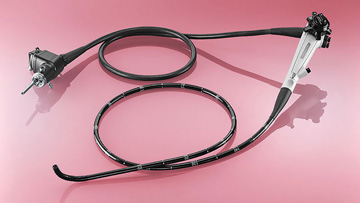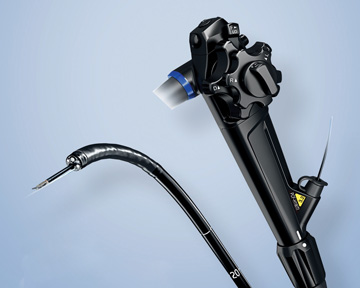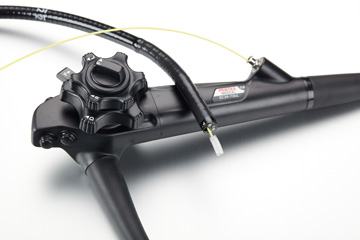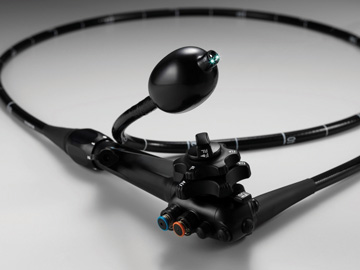• Light and augmented images. Traditionally, colonoscopes shine white light to examine tissue. Scope manufacturers are now delivering different shades of light that provide diagnostic advantages. Non-white light imaging available on some newer scopes enhances the view of various types of tissue. Some scopes offer blue light in the near spectrum, a smaller wavelength that penetrates tissue a bit more deeply. For example, when examining tumors or polyps, endoscopists can see through the mucosal surface to view the underlying vascular pattern. The technology allows them, essentially with the flip of a switch, to find abnormal areas and perform targeted biopsies that hopefully lead to more precise diagnoses.
Another feature currently in the works among numerous manufacturers is autofluorescence. When fluorescent light, such as that from the ultraviolet wavelength, is shined on some human tissues and tumors, the anatomy will appear to be almost glowing. This feature allows endoscopists to determine if a particular area they’re examining is different than others.
• Field of view. Most colonoscopies are performed to diagnose and find polyps. The wider the field of view the scope provides, the more of the colon the endoscopist can see. A wide field of view usually translates into better visualization and therefore improved polyp detection.
• Maneuverability. The endoscopist’s ability to control the movements of the scope is crucial. To perform high-quality colonoscopy screenings, they need to reach the cecum. That means they need to maneuver scopes around numerous bends in the colon, which requires pushing, pulling, twisting and angling the scope’s tip.
Many modern scopes have features built into the mechanical shaft, including a separate knob that adjusts the stiffness of the scope. Stiffening the scope after it passes through a tight bend in the colon prevents the bend from getting bigger and helps the endoscopist continue the exam.
Some newer scopes enable the torque endoscopists apply manually to translate all the way to the tip of the inserted scope, through the multiple bends in the colon they’ve already navigated. A more navigable scope means they have a greater chance of reaching the cecum — which in turn will improve their screenings and quality metrics.
• Maintenance. Unlike some other types of scopes that take a beating, colonoscopes shouldn’t need to be repaired too often and in general their lifespans are long. Many of the scopes I bought when I first came to my medical center 10 years ago are still in use today. But when a scope does break down, it has downstream consequences. That’s why it’s important to have a solid service contract in place with scope manufacturers. How much will you pay for repairs, and how long is the turnaround time? What is considered standard wear and tear to the scope versus what is considered nonstandard? Do you get an equal-model loaner when a scope is being repaired so workflow is not disrupted? Know and understand the details of the service contract your facility will be offered before signing along the dotted line. OSM
.svg?sfvrsn=be606e78_3)





.svg?sfvrsn=56b2f850_5)